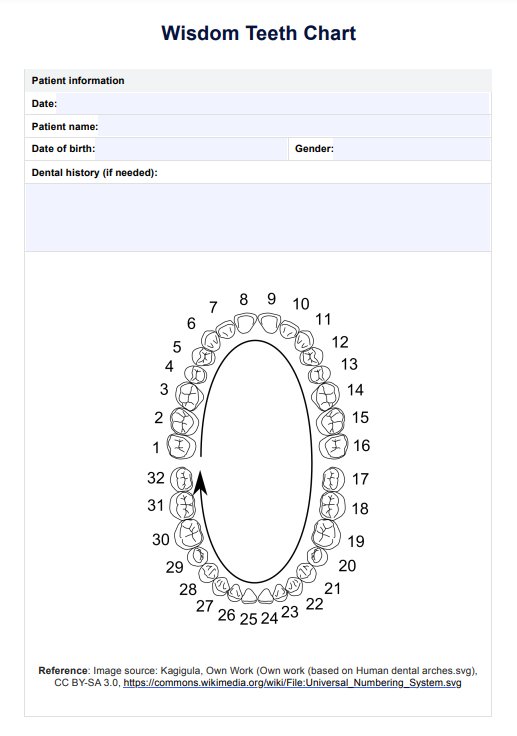Dentists or oral surgeons are most likely to use a wisdom teeth chart.

Wisdom Teeth Chart
Keep track of your patient’s molars to maintain their dental health or easily spot possible issues that may arise with the help of a wisdom teeth chart.
Use Template
Wisdom Teeth Chart Template
Commonly asked questions
Wisdom Teeth Charts are used when the patient reaches the age when wisdom teeth are expected to grow between the ages of 17 and 25.
Wisdom Teeth Chart can be used as an educational resource, reference, or document to help the dentist or oral surgeon keep track of the growth and condition of the patient's wisdom teeth.
EHR and practice management software
Get started for free
*No credit card required
Free
$0/usd
Unlimited clients
Telehealth
1GB of storage
Client portal text
Automated billing and online payments











